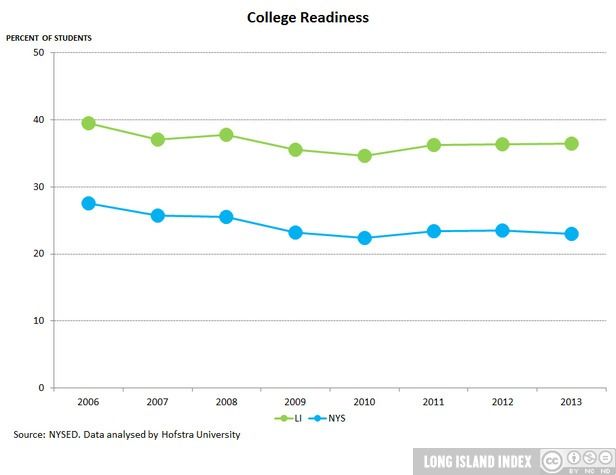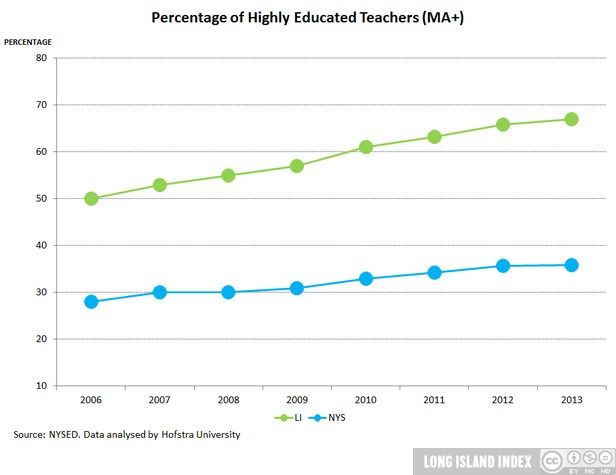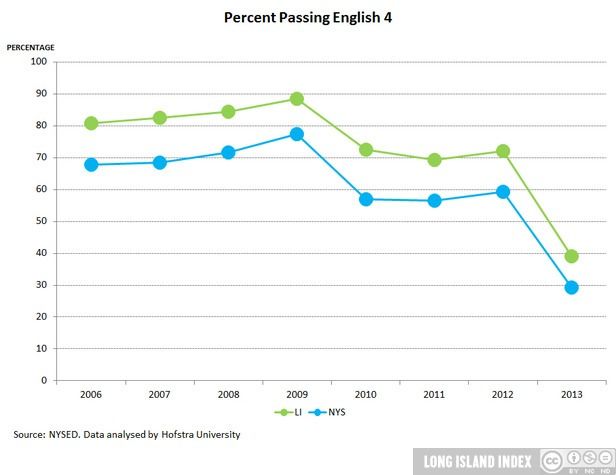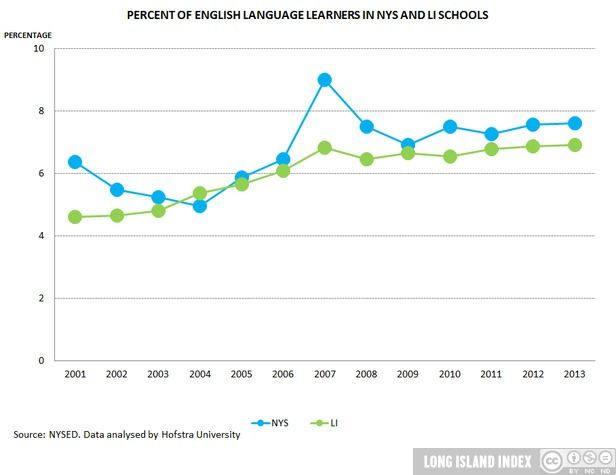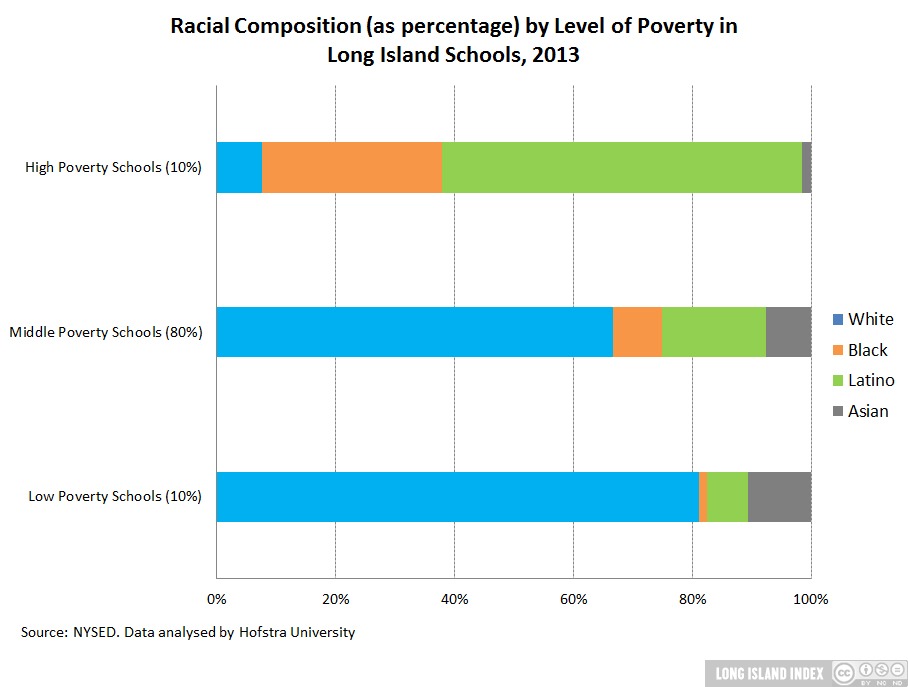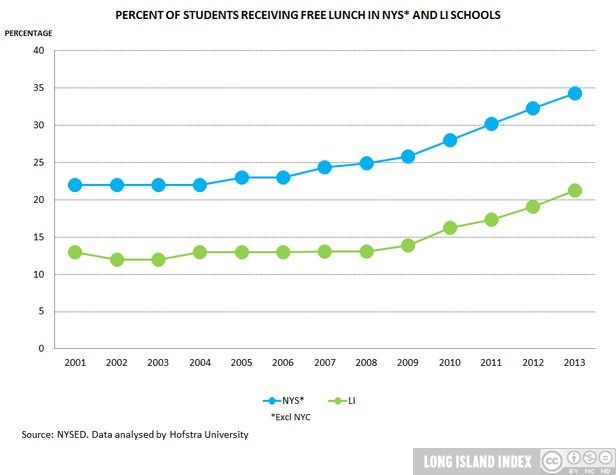Education
College Readiness
After a slight decline between 2006 and 2007, College Readiness has been essentially flat. Through 2013, there is a sizable gap in the performance between high and low poverty schools.
Teacher Education and Turnover
Long Island teachers tend to surpass New York State with greater educational preparedness. Turnover rates on Long Island were higher than NYS during the post-recession years, but returned to the State level in 2013.
Academic Performance: 4th Grade & 8th Grade
Overall Long Island schools’ 4th Grade English Language Arts performance results exceed New York State. The gap between low-poverty and high-poverty schools, narrowed until 2009, but has since increased. 8th Grade Math results continue to exceed New York State. Performance for high-poverty schools improved until 2009. Dramatic declines were seen in 2013.
English Language Learners
Students with Limited English Proficiency are disproportionately taught in high-poverty districts.
Race and Ethnicity
The racial and ethnic composition of Long Island schools is also noteworthy as Long Island remains one of the most residentially segregated areas of the United States.
Poverty Index
While overall poverty levels on Long Island are lower than NYS as a whole, poverty in Long Schools is increasing.
